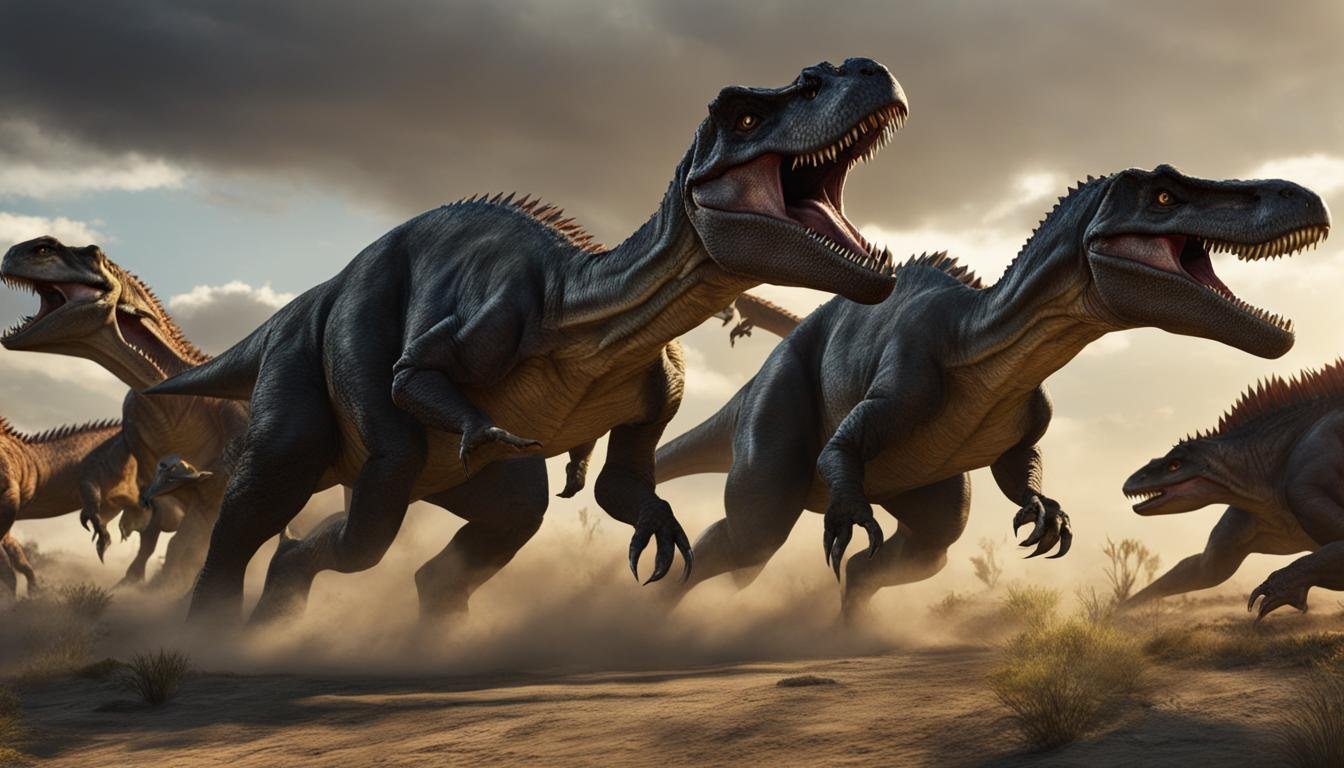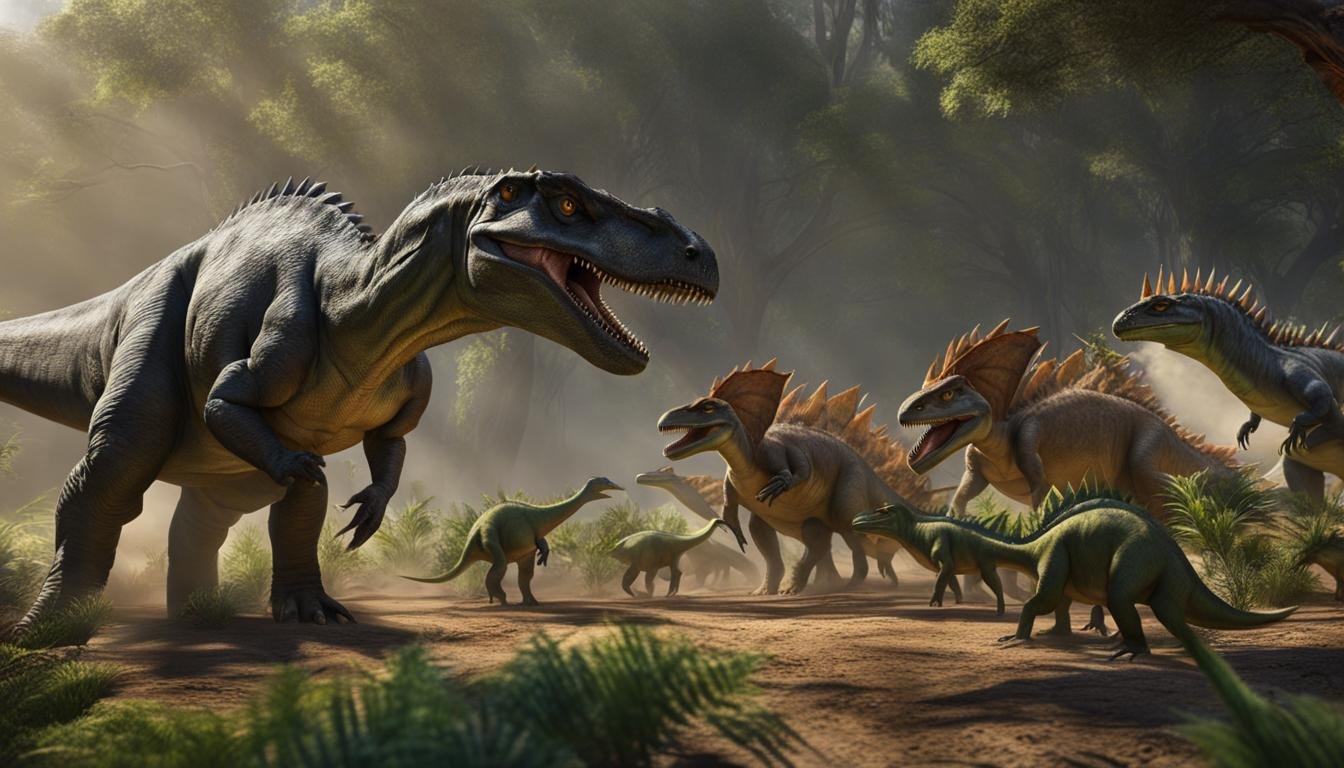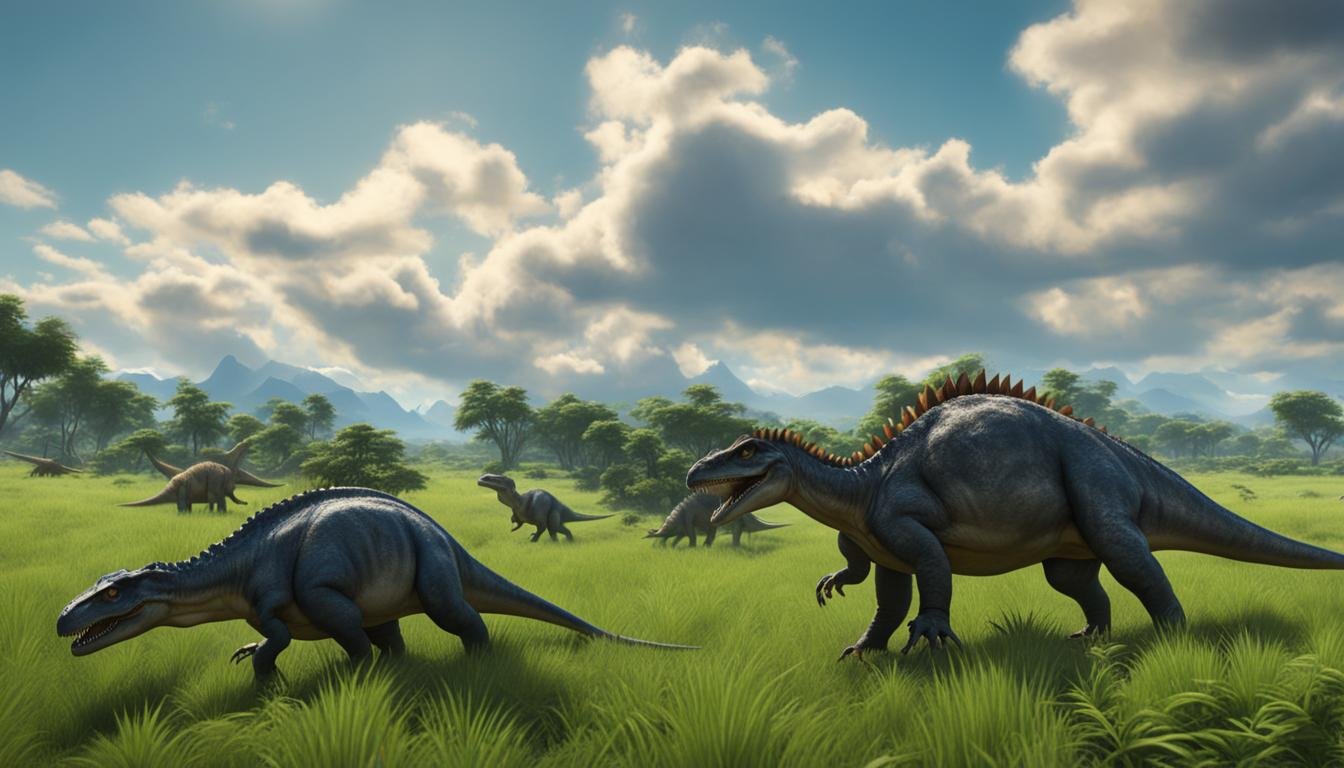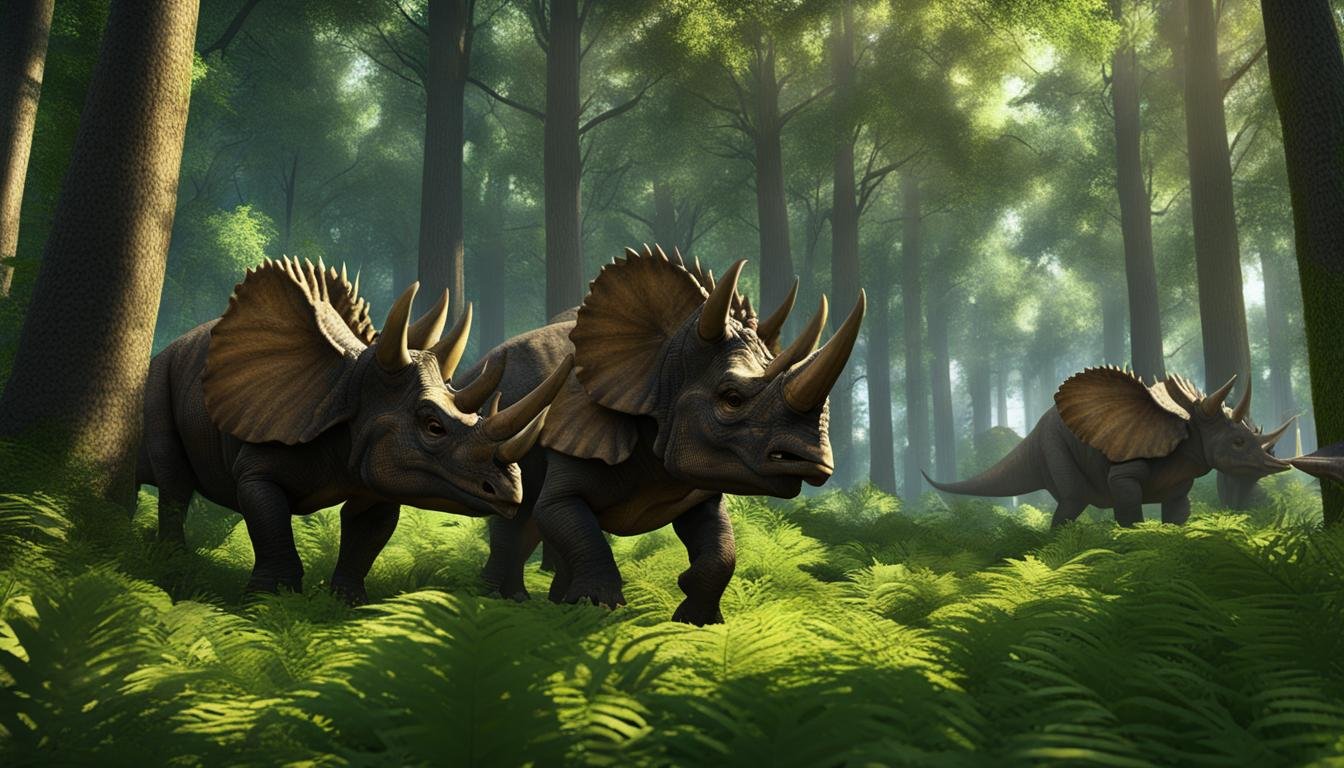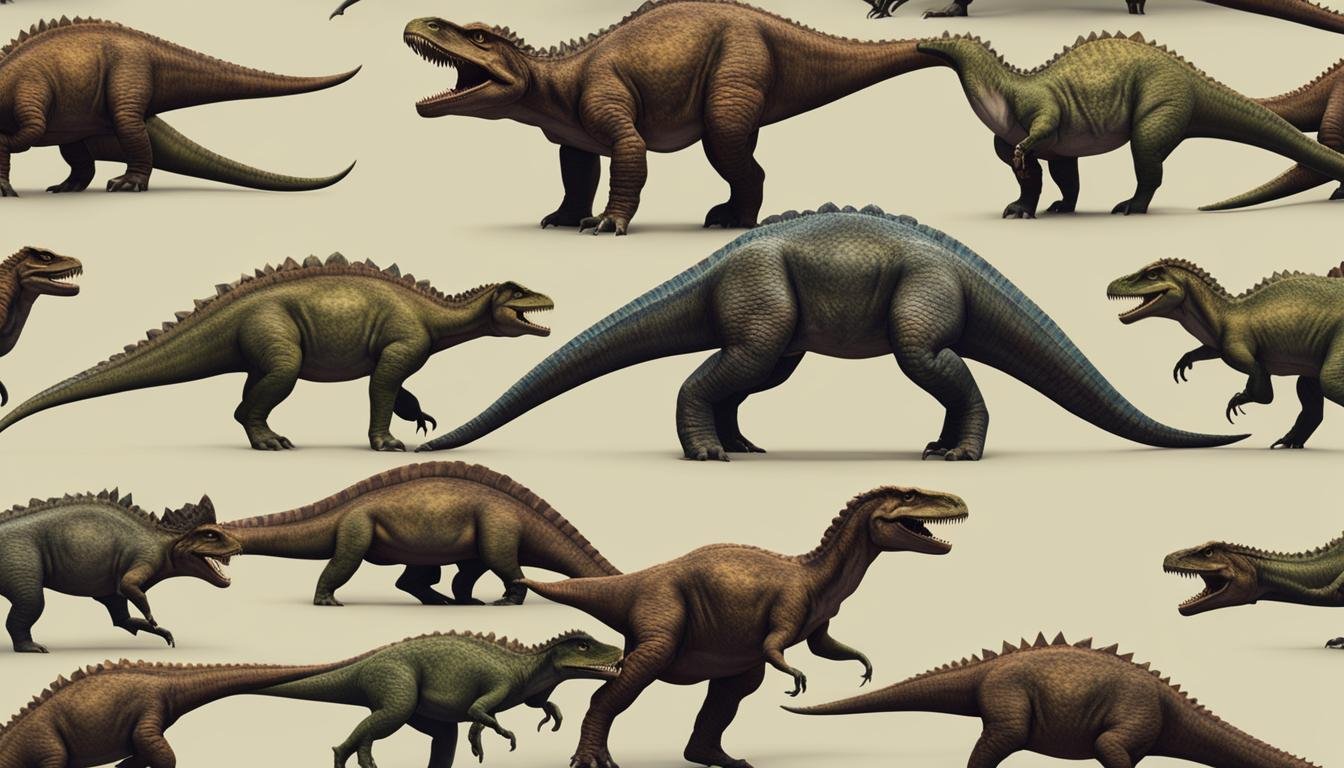When we think of dinosaurs, we often picture them as fierce and solitary hunters. However, recent discoveries have challenged this perception, revealing evidence of pack hunting strategies in carnivorous dinosaurs. These ancient predators, such as the fearsome Deinonychus, may have exhibited complex cooperative hunting behaviors that allowed them to thrive in their environments.
Fossil sites have provided important insights into the predatory behavior of carnivorous dinosaurs. The presence of multiple individuals of the same species in close proximity suggests that these dinosaurs may have hunted in packs rather than individually. This cooperative hunting strategy would have allowed them to take down larger prey and defend their territories effectively.
While the concept of pack hunting in carnivorous dinosaurs is still debated, the evidence continues to accumulate. Modern studies, along with the analysis of fossil records, provide valuable clues about their social behavior and hunting strategies. By understanding how these dinosaurs worked together as social predators, we can gain a deeper appreciation for their ecological adaptations.
| Key Takeaway | Detail |
|---|---|
| Pack Hunting Strategies | Some carnivorous dinosaurs likely used pack hunting strategies to capture prey. |
| Benefits of Cooperative Hunting | Cooperative hunting enabled these dinosaurs to hunt larger prey and defend their territories more effectively. |
| Evidence of Pack Hunting | The existence of pack hunting behaviors in carnivorous dinosaurs is supported by fossil evidence and contemporary studies. |
| Insights into Social Behavior | Studying these hunting strategies provides valuable insights into the social behavior and ecological adaptations of these dinosaurs. |
| Need for Further Research | More research is necessary to fully understand the complexities and nuances of pack hunting in carnivorous dinosaurs. |
Fossil Evidence and Group Attack Tactics
Fossil records provide valuable evidence of group attack tactics in carnivorous dinosaurs, shedding light on their hunting behaviors and social dynamics. Excavations at multiple sites have revealed the remains of multiple predators in close proximity to each other, suggesting coordinated hunting behavior. For example, the discovery of multiple Deinonychus individuals near a Tenontosaurus skeleton indicates that pack hunting may have been employed.
Behavioral ecology studies further support the idea of group attack tactics in carnivorous dinosaurs. These studies examine the interactions between predators and their prey, revealing the use of tactics such as prey ambush and coordinated hunting strategies. Similar strategies are observed in modern-day predators, demonstrating the relevance of these behaviors in the past.
The study of paleontological records continues to provide valuable insights into the hunting behaviors of carnivorous dinosaurs. By analyzing fossil evidence and observing modern-day predators, researchers can gain a deeper understanding of how ancient carnivorous dinosaurs hunted and adapted to their environments. The exploration of fossil evidence and group attack tactics offers a fascinating glimpse into the complex and dynamic world of these prehistoric predators.
Alpha Predator Leadership and Pack Dynamics
One of the key aspects of pack hunting in carnivorous dinosaurs was the presence of alpha predator leadership. Within a pack, there would often be an individual that assumed a dominant role and acted as the leader during hunts. This alpha predator would possess unique characteristics or employ dominance displays that established their leadership position. The alpha predator’s role was crucial in coordinating the pack’s hunting efforts and ensuring the effectiveness of their strategies.
In addition to alpha predator leadership, pack dynamics played a vital role in the success of pack hunting strategies. The members of a pack would work together to take down larger prey or defend their territory. Effective communication and coordination were essential for hunting coordination, maximizing efficiency, and increasing their chances of survival during hunts. The ability to work as a team and carry out complex hunting maneuvers contributed to the overall success of the pack.
Survival strategies employed by pack-hunting carnivorous dinosaurs revolved around the coordination and cooperation of the individuals within the pack. By working together, pack members could strategically surround and isolate their prey, increasing their chances of a successful kill. Territorial hunts were also common, with packs establishing and defending their hunting grounds from rival packs or other predators. These strategies allowed pack-hunting dinosaurs to secure enough food resources and ensure the survival of their pack.

| Alpha Predator Leadership | Pack Dynamics |
|---|---|
| Established dominant individual | Working together as a team |
| Unique characteristics or dominance displays | Coordinated hunting strategies |
| Leader during hunts | Maximizing efficiency and effectiveness |
Communication and Species-Specific Tactics
Communication played a crucial role in the pack hunting strategies of carnivorous dinosaurs. Fossilized trackways provide evidence of coordinated movements and hunting patterns, suggesting some level of communication between pack members. These trackways show how different species of carnivorous dinosaurs worked together to bring down their prey, using various tactics and strategies to their advantage.
In predator-prey interactions, species-specific tactics were observed among different carnivorous dinosaur species. Each species had its own unique approach to hunting, employing tactics that were suited to their physical characteristics and hunting environment. For example, some species may have utilized herd ambush strategies, where they would strategically target a specific member of a herd to isolate and attack. Other species may have relied on stealth approaches, using their agility and camouflage to surprise their prey.
“By analyzing the fossilized trackways and studying predator-prey interactions, we can gain valuable insights into the hunting behaviors and ecological adaptation of carnivorous dinosaurs,” says Dr. Sarah Johnson, paleontologist and lead researcher on the study.
The study of these communication and species-specific tactics in pack hunting provides us with a deeper understanding of the social hunting behaviors and survival strategies of these ancient predators. It allows us to unravel the complexities of their cooperative hunting strategies and how they adapted to their environment to maximize their hunting success rates.
| Species | Tactics |
|---|---|
| Tyrannosaurus Rex | Stealth Approaches |
| Velociraptor | Herd Ambush Strategies |
| Allosaurus | Coordinated Attacks |
Conclusion
In conclusion, pack hunting strategies were likely employed by some carnivorous dinosaurs. Fossil evidence, behavioral studies, and paleontological records support the concept of cooperative hunting in these ancient predators.
Alpha predator leadership, pack dynamics, and communication were crucial elements of their hunting strategies. The ability to adapt to their environment, form hunting formations, and work together as a team played significant roles in their hunting success rates.
Stealth approaches, species-specific tactics, and feeding strategies were employed by different species to maximize their chances of capturing prey. Dominance within hunting packs and aggressive group behavior also contributed to their social hunting behaviors.
The study of pack hunting in carnivorous dinosaurs provides valuable insights into the ecological adaptation and teamwork in predation of these fascinating creatures.

